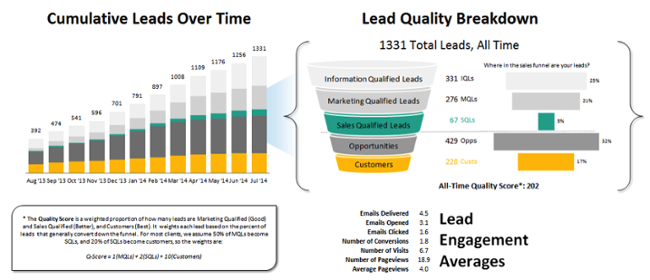Join 40,000+ sales and marketing pros who receive our weekly newsletter.
Get the most relevant, actionable digital sales and marketing insights you need to make smarter decisions faster... all in under five minutes.
Your marketing team and your sales team take care of two very different parts of the sales process. It can be a seamless relationship that benefits your customers and your business, or it can be a tension-filled struggle that leads to little conversation and a lack of understanding on both sides.
If your sales and marketing teams haven't been working together, check out these five reasons why improving that relationship with integrated sales and marketing is critical.
Reason #1: It Decreases Customer Confusion
Is the marketing team making promises that the sales team can't live up to? Does the sales team roll their eyes and complain that the marketing team has no idea what they're actually selling? Unfortunately, this can be highly detrimental to the sales process. It confuses customers, leaving them disappointed with products that would fit their needs just fine, if only they were answering the promises made in marketing.
Reason #2: Sales Teams Have a Better Picture of Customer Needs
The sales team works directly with customers every day. They get to listen to what customers need, discuss their desires and discover what they really want out of their products. This means that the sales team ends up with a much more accurate picture of customer needs than the marketing team. When the two teams work together, the marketing team is able to utilize more effective strategies that reach customers more efficiently.
Reason #3: The Lead Process Flows More Smoothly
Each stage of the sales funnel requires deliberate interactions with the customer to pull them from interested prospect to satisfied customer who would return to your business for their future needs. When the sales and marketing team don't work well with one another, it's your customers who suffer. They won't get the attention they need. They might not be ready to make a purchase yet, but the sales team doesn't have the tools to effectively nurture the lead and bring the customer deeper into the process. This can lead to customer confusion —and often, it means they'll head to your competitor instead.

Reason #4: Aligned Teams are On the Same Page
Does your marketing team know what the sales team's goals are? Have they calculated the success of their marketing strategies—from blog content to advertisements, based on real sales—or are their "successes" based on things like website visits and the number of potential customers who click through an email? When the teams work together, the sales team's goals become the marketing team's goals...and that means that everyone is working together for the ultimate good of the company. Without that alignment, the two teams have disjointed goals. The marketing team may struggle to provide the leads that the sales team needs simply because they don't have the right information!
Reason #5: The Numbers Don't Lie
If you still aren't convinced of the importance of the symbiotic relationship between sales and marketing, just take a look at the numbers! On average, when the relationship between sales and marketing isn't flowing smoothly, there's a 4% decrease in company revenue. But once the relationship is sorted out and the two teams are working together, many companies experience a 20% increase in their sales.
As you integrate the two teams and teach them to work more effectively together, both your business and your customers will appreciate the benefits. A seamless customer experience starts with their first interaction with your company, whether that's reading through a blog post or visiting a social media account, and moves to the final sale completed by the sales team. Developing cohesion between these two teams will significantly improve the customer experience for your company.


Register for IMPACT Live in Hartford CT, October 14-16!
.jpg?width=50&height=50&name=Ali-Parm%20(1).jpg)
